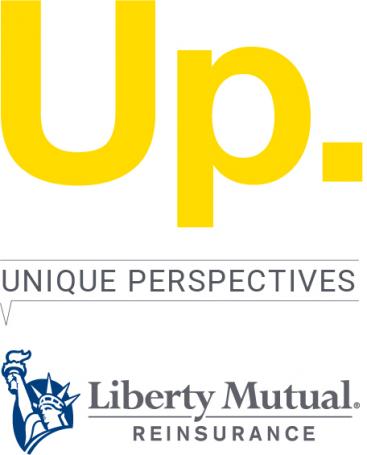As market conditions improve, casualty reinsurers are striving to achieve optimal margins. Is it simply a matter of using traditional techniques? Or, as Thomas Greene, Max Mallen and Ralph Stainbank suggest, do reinsurers need to find a better way to earn.
In the Oz-themed hit musical Wicked, the high point comes at the climax of the first act. Soon-to-be Wicked Witch of the West Elphaba levitates spectacularly to sing Defying Gravity, a song about an outsider discovering the full extent of her powers. The audience cheers, the curtains close and everyone knows they’re sticking around for act two.
Casualty reinsurers have much in common with Elphaba. They too, some commentators say, are seeking to defy gravity. Having seen rates increase during the early stages of the pandemic, new capacity is poised to enter the market, creating a downward pressure on rates. Even though some reinsurers point towards the impact of claims inflation, climate change and rising catastrophe costs keeping a foot on the rates accelerator, others suspect that the momentum is ebbing away. But even as new capital circles, there are reinsurers who believe that, by harnessing the potential of new technology and an enlightened approach to data, they will be able to defy gravity.
Connected world
A reinsurer’s performance does not exist within a vacuum: it’s inextricably linked to the behaviour of the primary carrier, capital markets, investment markets – in fact, a whole host of influences. The good news is that right now, conditions for primary insurers have improved markedly. The soft market that characterised much of the last decade has been hardening since the back end of 2019. In addition, the pandemic certainly provided the impetus necessary to drive those over-due rate increases. Yet many reinsurers remain under pressure. There are several reasons for this.
While casualty reinsurers are cognisant of the need to reduce costs in the distribution chain, ceding companies have resisted pressure to reduce commission rates, and have in fact pressed for increases. This is in part because they recognise these are fundamentally better deals than were available one or two years ago. With reinsurance capacity in plentiful supply, there are always competitors willing to under-cut incumbents for the sake of gaining market share.
The theory of how reinsurers make a profit is an interesting one. We take those risks that primary insurers consider too volatile or too large by building up a sufficiently diverse portfolio so that our cost of capital is lower than for the primary insurers with whom we partner. However, where the theory unravels is when reinsurers encounter what can be called ‘leakage from the value chain’.
For example, if a reinsurer achieves cost savings, competitive pressures in the market mean those savings are passed onto customers in the form of cheaper reinsurance capacity. If, by contrast, an intermediary achieves savings, much of that ‘margin expansion’ is passed on as increased profit to its owners and not as reduced cost to buyers. Thus value leaks from the chain.
Margin call
The need for reinsurers to make an adequate margin is undeniable. The insurance industry relies on reinsurers as a key part of their own capital management strategies, which requires a strong, healthy, and innovative reinsurance sector to optimise its performance. Like Elphaba, reinsurers are sticking around for the second act. The fundamentals remain intact.
Tort reform would be beneficial for casualty reinsurers. With so-called ‘nuclear verdicts’ of over $10m increasing, third-party litigation funding on the rise, and populist attitudes colouring traditional standards of care and liability, it is no surprise that insurance rates have responded in kind. But there is a win closer to home – a win that reinsurers can tap into without having to seek external change.
Finding answers
Where reinsurers can exercise a degree of self-determination is the way in which they manage data. Good data allows a reinsurer to do many things – spot trends, make better decisions, learn lessons. It also narrows the response time to observable trends. We all know stories of competitors who read a market right ahead of time and either pulled out or piled in, mitigating losses or making outsized profits. Aligning incentives for decision-makers and empowering them alongside smarter use of data will enable Liberty Mutual Re (LM Re) to make those smart moves more often.
To be a winner, a reinsurer doesn’t have to get everything right. What it needs to do is get at least one thing right that its competitors don’t – or do something faster. That’s where predictive analytics enter the picture. Liberty is embarking on a wide-ranging project to make better use of the client and risk data we already collect. Like many reinsurers, we hold terabytes of data. Much of it is used for pricing, but then its full potential is overlooked. We’re looking to change that. Our objective is to create online data repositories that will power our decision-making.
The claims arena provides some compelling examples of how effectively good data can be employed. Some US primary insurers are using insurtech solutions to analyse claims data to new levels of granularity that can identify frequency and severity trends requiring attention in real time. Where previously it could take months or years to identify issues within a portfolio, these carriers can now make pricing adjustments for any given portfolio within 24 hours. Reinsurers need to be able to do the same, identifying those areas within their portfolios that are burning through money. In simple terms, we need to learn how to move faster. That agility could save points on a loss ratio.
LM Re is implementing a global digital strategy to maximise the way we analyse and interact with our data working alongside our Global Risk Solutions Innovation Lab to produce new products and new approaches. Tools that proactively look at the potential future of a portfolio, opposed to being reactive to the past. With unreliable investment returns and a market that’s increasingly hard to second guess, the need to focus on portfolio optimisation and underwriting profitability is paramount. Technology will be key in this. Now that the pandemic has inspired a wholesale rethinking of the way in which we use data and technology, the possibilities are enormous.
The fundamentals of reinsurance may not have changed, but our ability to harness the power of data has. It’s that data that will provide reinsurers with the ability to defy gravity. Whichever way the market moves, the ability to pre-empt that will be critical. Tapping into that power will give reinsurers the ability, like Elphaba herself, to make a fresh start outside the emerald walls of Oz.





